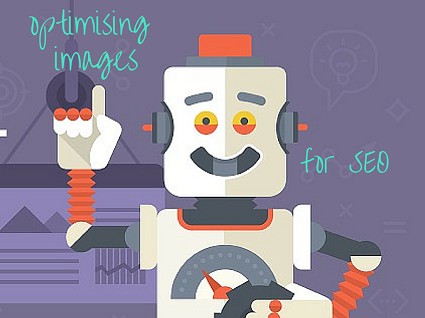Your cart is currently empty!

SEO and Images: 5 Top Tips
Have you heard that “people are more visual nowadays”? That’s a ridiculous claim from a biological point of view, but it makes the important point that people like to look at pictures, so you should use pictures on your website and in your social media.
Unfortunately, pictures at your website are, from the point of view of the search engines, just about as useful as those gorgeous coffee table books or splashy eye-catching magazines you keep in the waiting room. That is, Google can’t see them.
It is true that Google’s robots, along with many other robots, are gaining more ability to recognize images. However, just as your website visitors may choose to look at the pictures and skim through the text, Google chooses to analyze your text and ignore your photos — unless you make an effort to communicate better with search engines about what your pictures are communicating to the humans.
Here are five things you can do to make sure that your images do you some good from the point of view of SEO:
- Use words to identify the point of your pics in language that a search engine understands. In the screenshot below, you can see that both the title and the alt text tell what the image is intended to convey. If you don’t add your own images, just ask your web people to remember to use titles and alt text to communicate with the search engines, rather than having a title like “DSCN4127” or “Shutterstock_6881899” and no alt text.
- Remember that Google isn’t reading the text on your images. There’s nothing wrong with having text on your images. It encourages people to Pin them and share them, after all. People like words. But you can’t assume that the words you put onto your images will get across to the search engines. If you want people looking for those words to find your post, you need to put the words into your text, too.
- Don’t consider the text on the image in your word count, either. When you use a nice infographic filled with information and just give it a four-word introduction, search engines consider the page essentially empty. It only has four words. When you want a page to get plenty of search traffic, go for 400 words or more, not 4, and remember that text on images doesn’t count.
- Optimize your images. Make sure you’re using small files, not gigantic ones that could make your post slow to load. This is relevant for SEO because Google prefers fast-loading pages over slow ones, all things being equal.
- If you have a lot of images and they matter — for example, the product images at an ecommerce site — add an image sitemap at your Google Webmaster Tools.
Related posts:
by
Tags:




Leave a Reply